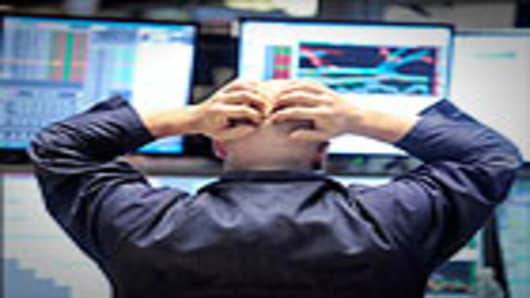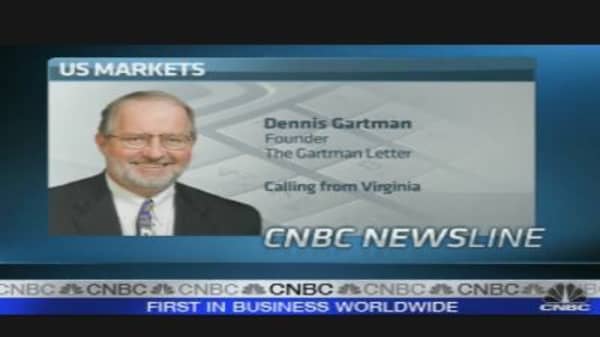The glitch that sent markets tumbling Thursday was years in the making, driven by the rise of computers that transformed stock trading more in the last 20 years than in the previous 200.
The old system of floor traders matching buyers and sellers has been replaced by machines that process trades automatically, speeding the flow of buy and sell orders but also sometimes facilitating the kind of unexplained volatility that roiled markets Thursday.
“We have a market that responds in milliseconds, but the humans monitoring respond in minutes, and unfortunately billions of dollars of damage can occur in the meantime,” said James Angel, a professor of finance at the McDonough School of Business at Georgetown University.
In recent years, what is known as high-frequency trading — rapid automated buying and selling — has taken off and now accounts for 50 to 75 percent of daily trading volume. At the same time, new electronic exchanges have taken over much of the volume that used to be handled by the New York Stock Exchange.
In fact, more than 60 percent of trading in stocks listed on the New York Stock Exchange takes place on separate computerized exchanges.
Many questions were left unanswered even hours after the end of the trading day. Who or what was the culprit? Why did markets spin out of control so rapidly? What needs to be done to prevent this from happening again?
The Securities and Exchange Commission and the Commodity Futures Trading Commission said they were examining the cause of the unusual trading activity.
Mary L. Schapiro, chairwoman of the S.E.C., and Gary Gensler, the head of the C.F.T.C., held conference calls with overseers of the exchanges who were reviewing trading tapes from the day.
One official said they identified “a huge, anomalous, unexplained surge in selling, it looks like in Chicago,” about 2:45 p.m. The source remained unknown, but that jolt apparently set off trading based on computer algorithms, which in turn rippled across indexes and spiraled out of control.
Many firms have computers that are programmed to automatically place buy or sell orders based on a variety of things that happen in the markets. Some of the simplest triggers are set off when a stock drops or rises a certain percent in the trading day, or when an index moves a specific amount.
But these orders can have a cascading effect. For example, if enough programs place sell orders when the overall market is down, say, 4 percent in a single day, those orders could push the market down even more — and set off programs that do not kick in until the market is down 5 percent, which in turn can have the effect of pushing stocks down even more.
Some circuit breakers do exist, a legacy of the reforms made following the 1987 stock market crash, but they only kick in after a huge drop — and only at certain hours. Before 2 p.m., a 10 percent drop in the Dow causes New York Stock Exchange to halt trading for one hour. Between 2 p.m. and 2:30 p.m., the pause shrinks to a half-hour and after 2:30, there is no halt in trading.
If there is a 20 percent drop, trading stops for two hours before 1 p.m. and by one hour between 1 and 2 p.m. After 2 p.m., the market closes.
Glitches in individual stocks have happened before — what was different Thursday was the scale of the problem. In April 2009, shares of Dendreon, a small biotech company, dived by more than 50 percent in less than two minutes, just before a presentation by Dendreon executives, Mr. Angel said.
Trading was halted on the Nasdaq, where Dendreon is listed, but there was no news as it turned out, Mr. Angel said, and when trading resumed the stock returned to its previous levels. “It took a human two minutes to discover something was wrong and halt trading,” he said.
What happened Thursday was different because it moved hundreds of stocks sharply at the same time, many of them blue chips that form the foundation of individual investors portfolios as well as major indexes like the Dow and the Standard & Poor’s 500-stock index.
The near-instantaneous swings left brokers dumbfounded. Dermott W. Clancy, who runs a New York Stock Exchange broker, said Thursday was one of the five worst days he has seen in 24 years in the business. When the market dropped across all indexes in a matter of minutes, customers were calling him nonstop.
“They’re calling saying ‘Is there something I’m missing? Is there somebody valuing these securities at this level? Is there some news in the marketplace I’m not aware of?’ ” he said.
The answer — that it all started with an apparent error — infuriated Mr. Clancy. “The market was never down one thousand points,” he said. “Procter & Gamble should never have traded at $39. But a lot of people lost money as if the prices were meant to drop.”
For a short while, traders started to distrust what they were seeing.
“There was no pricing mechanism,” Mr. Clancy said. “There was nothing. No one knew what anything was worth. You didn’t know where to buy a stock or sell a stock.”
- Jackie Calmes and Binyamin Appelbaum in Washington contributed reporting.




